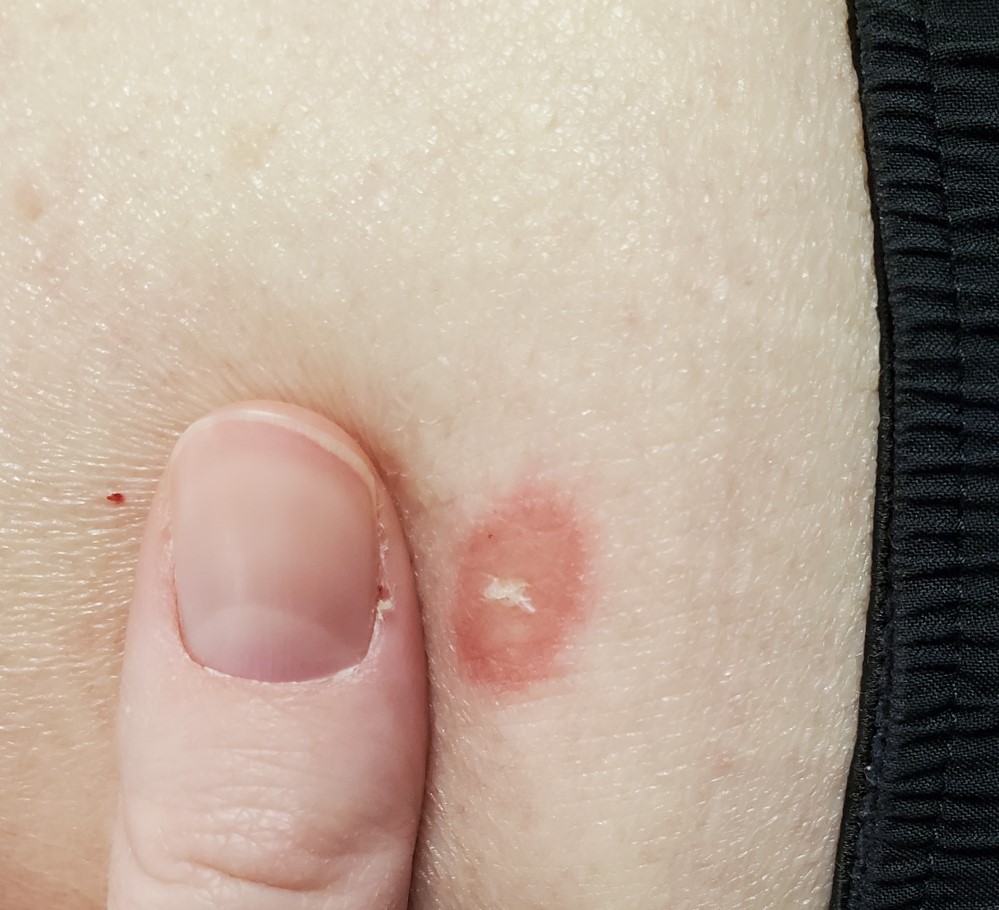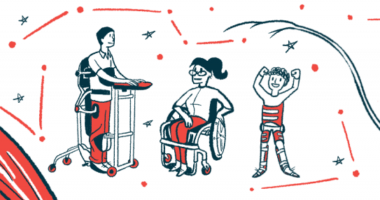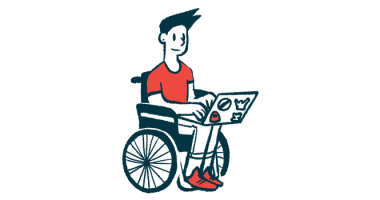Checking for pressure sores plays key role in SMA patients’ health
The more eyes the better when it comes to these important skin checks

This small, insignificant looking spot can quickly turn into a pressure sore or a pressure ulcer. (Photo courtesy of Emily Jones)
While working with any population that isn’t able to independently move around, or doesn’t move frequently for any reason, pressure sores should be checked for regularly. We call these skin checks and they are done to check frequently affected areas, such as bony places on the body or places where the patient puts the most pressure. For example, if they are in bed for the majority of the day, their hips, backs, back of their heads, heels, and anything else that has frequent pressure should be examined.
Most of these people will have caregivers who also are doing these checks frequently, but the more eyes, the better. We are all human and miss things from time to time, so having more frequent skin checks from a number of people is best.
This topic is being brought up secondary to finding the beginnings of a pressure sore on my patient with spinal muscular atrophy, Michael. He had been experiencing some difficulty staying in his new wheelchair for extended amounts of time secondary to not being used to it yet. This caused Michael to transition into his bed earlier in the day than he normally would for several days in a row.
Due to this change in pressure, I discovered a small red circle, about as big as my thumbnail, on his right superior hip. Although Michael explained that this spot was not painful at all, there was still concern that the spot could continue to worsen and become a pressure ulcer of an increased stage.
These are concerning because they are difficult to heal and you must keep a close eye on them and ensure no pressure is put on this area until it is healed. After this particular treatment, Michael experienced less hip pain while sitting in his chair and was able to stay in his chair longer. With this change, the pressure sore mostly healed within two weeks and didn’t worsen.
There are four stages of a pressure ulcer:
- Stage one is classified by redness of the skin.
- Stage two is redness with possibly an open sore or blister.
- Stage three is where you begin to see a crater-like appearance and the damage is now below the skin’s surface.
- Stage four is a large wound where muscle and or bone can be damaged.
If left unchecked, these stages can progress quickly and become very dangerous, as well as a site for serious infection. The faster you can catch these, the easier they can heal and you can give advice to the patient and caregivers as to how to avoid them in the future.
It can easily become a team effort to keep these at bay and maintain the integrity of the skin by making sure bony places are off-loaded and patients aren’t left in the same position for too long. Even if the patient is most comfortable in one position, remind them of the dangers of pressure sores and how changing positions often is important.
Keep in constant communication with your patients and let them and their care team know when you think you may see something so that everyone can keep an eye on the spot where you think something may be forming.
Patient perspective
As sad as it sounds, pressure sores are just a part of living with SMA. The majority of us sit in wheelchairs, and repositioning is often an arduous task. We have the same problem when we go to bed, because it’s difficult for those of us with SMA to roll from side to side and reposition.
A few years ago, I developed a pressure sore at the base of my buttocks. This small, and to me insignificant, spot ended up getting worse within one week. Unable to sit in my wheelchair, and due to the sensitivity of this spot, I found myself in the hospital for five days. While in the hospital, wound nurses came into my room every hour and rolled me from side to side. After finally getting released from the hospital, I swore to myself that this would never happen again.
I’m extremely lucky that I have good caregivers and physical therapists. They are the eyes that have taken responsibility to make sure that these pressure sores and ulcers are noticed quickly, and are addressed before they become dangerous enough to put me back in the hospital.




